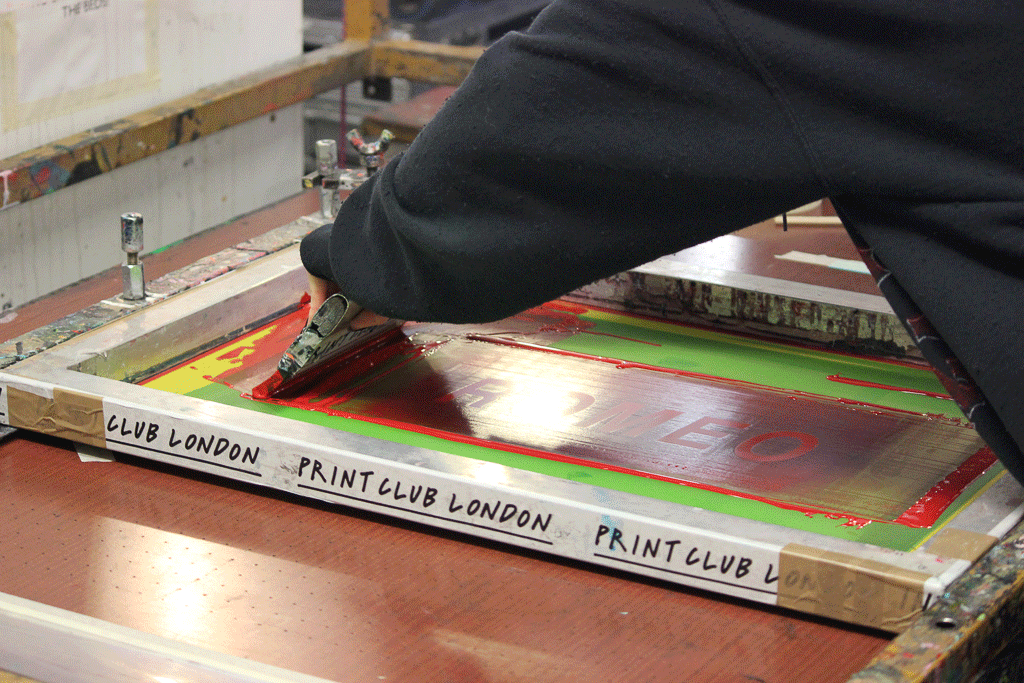ChatGPT said: Why 10:9 Design Screen Printing is perfect for corporate gear
The Vital Overview to Recognizing Screen Printing and Its Versatile Utilizes
Screen printing has a rich history that goes back to old times, advancing right into an advanced method utilized throughout various industries today. This overview checks out the ins and outs of the screen printing procedure, detailing its applications in home, marketing, and style décor - 10:9 Design near me. Recognizing these fundamentals can open up creative possibility for both commercial and imaginative tasks. The following sections will certainly disclose crucial ideas and methods to boost one's screen printing ventures
The Background of Screen Printing
Screen printing has origins that map back centuries, its development shows the technological and artistic improvements of various cultures. Originating in old China, the strategy was originally utilized for embellishing fabrics and later infect Japan, where it became indispensable to Ukiyo-e woodblock printing. The approach shifted to Europe in the 18th century, where it acquired appeal among artisans and business printers. The creation of photo emulsion in the 20th century revolutionized screen printing, permitting for even more intricate layouts and greater effectiveness. Artists like Andy Warhol even more thrust its popularity, utilizing the tool to develop renowned works that blended commercialism and fine art. By the late 20th century, screen printing had developed itself as a functional method, employed in style, advertising and marketing, and art. Today, it continues to evolve, incorporating electronic modern technology and broadening its applications across various markets.
The Screen Printing Process Explained
Screen printing transforms artistic visions into tangible designs via a series of exact actions. A picture is produced and then transferred onto a screen, typically made of fine mesh material stretched over a frame. A light-sensitive emulsion is put on the screen, which is revealed to light, hardening in locations not covered by the image. After rinsing the unhardened solution, a pattern is created.
Next, the screen is placed over the substrate, whether it be textile, paper, or one more material. Ink is then pressed with the open locations of the stencil using a squeegee, depositing the style onto the substrate below. This process can be repeated for multiple shades, calling for separate screens for every shade. The printed product is healed utilizing warm to assure the ink sticks appropriately, resulting in a resilient, vivid layout all set for usage.
Sorts Of Screen Printing Techniques

Additionally, specialized methods, such as discharge screen printing, remove dye from the textile to produce softer prints, while aluminum foil screen printing uses metallic aluminum foil to attain a shiny coating (10:9 Design Screen Printing). Each technique uses distinctive features, accommodating numerous innovative demands and manufacturing scales, eventually broadening the opportunities within the screen printing domain
Applications of Screen Printing in Various Industries

Additionally, the signs and advertising industries utilize screen printing for creating appealing display screens and banners. This method permits vibrant shades and intricate layouts that capture focus. In electronics, screen printing is employed for using conductive inks to circuit card, essential for component connections. In addition, the home decoration sector accepts screen printing to create distinctive styles on fabrics and wall surface art. In general, screen printing acts as an essential device throughout varied fields, boosting products with individualized and aesthetically appealing graphics.
Tips for Successful Screen Printing Projects
While carrying out a click here now screen printing job, mindful attention to detail can considerably enhance the final end result. Choosing top notch products is crucial; this includes the screen, inks, and substrates. Utilizing ideal mesh matters can impact ink deposition and information resolution. Preparation is just as crucial; detailed cleaning of displays and appropriate exposure times ensure crisp prints.
Next off, exact enrollment is critical for multi-color prints. Utilizing positioning tools can help achieve precise layering. Furthermore, testing prints on scrap products before manufacturing aids recognize possible issues without throwing away sources.

Regularly Asked Questions
What Materials Are Best for Screen Printing on Textile?
Cotton and polyester blends are optimal for screen printing on fabric because of their resilience and ink absorption. Additionally, specialized materials like silk or canvas can create distinct textures uv printed signs and finishes, improving the general design top quality.
Exactly how Do I Clean and Maintain Screen Printing Equipment?
To keep and clean screen printing equipment, one should on a regular basis wash screens with proper solvents, check mops for wear, oil moving components, and store all things in a dry, dust-free atmosphere to lengthen their life-span.
What Are the Ecological Impacts of Screen Printing?
Screen printing can have substantial environmental influences, including chemical waste from inks and solvents, water use during cleansing procedures, and power consumption. Eco-friendly products and lasting techniques are necessary for decreasing these adverse effects.
Can Screen Printing Be Done in the house Effectively?
Screen printing can be properly done at home with the right products and methods. Enthusiasts can create quality prints, though success depends on their ability level, tools, and understanding of the procedure included.
What Are the Prices Linked With Beginning a Display Printing Business?

Beginning a screen printing business involves prices for tools, materials, and office. First expenses generally vary from a couple of hundred to numerous thousand bucks, depending on the scale, quality of machinery, and preferred production ability.
Screen printing has an abundant background that dates back to ancient times, advancing right into an innovative method made use of throughout different sectors today. One more strategy, rotary screen printing, employs cylindrical screens, assisting in continuous printing on fabric rolls, therefore boosting effectiveness for large productions. Additionally, specialized strategies, such as discharge screen printing, eliminate color from the material to develop softer prints, while aluminum foil screen printing applies metal foil to attain a glossy coating. In the fashion sector, screen printing is commonly utilized to create vibrant styles on clothing, making it possible for brand names to showcase their distinct designs. Cotton and polyester blends are suitable for screen printing on material due to their longevity and ink absorption.